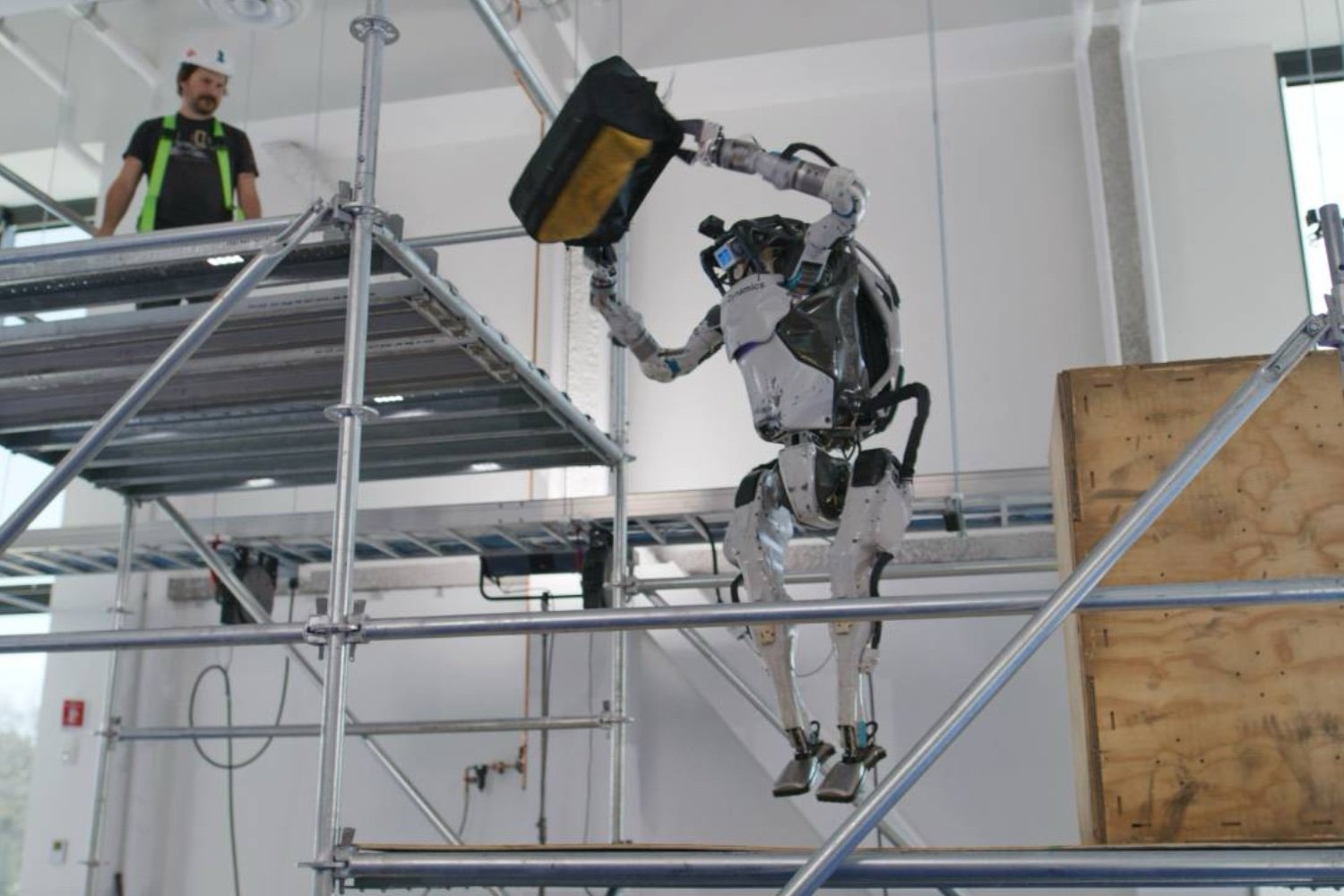Boston Dynamics and Robotics & AI Institute (Rai Institute) have announced a partnership, which will focus on Atlas, the manufacturer’s star robot. It is known for its impressive acrobatics and has recently been available in an electric version. Concretely, the idea is to make Atlas even more agile and more clever, in particular by teaching it to manipulate objects and to move better in various environments.
Learn to manage on its own
The two partners intend to cross several key steps with this project. First by going from simulation to reality: today, many robotics tests are done in computer simulations before being applied to real machines. But transferring these skills to the real world remains complicated. The idea is therefore to develop techniques that will allow Atlas to adopt more fluid and natural behavior once in the field.
Combined handling and mobility must also be improved. A good robot must not only know how to walk, but also interact with its environment. Atlas will have to learn to open doors, manipulate objects and coordinate its movements to be really useful in concrete situations.
Finally, it is a question of exploring the movements in full contact. For some tasks, a humanoid must use his whole body, as when he raises a heavy object or stabilizes after a shock. This partnership will therefore seek to perfect these techniques thanks to artificial intelligence.
According to Robert Playter, CEO of Boston Dynamics, this collaboration seeks to make robots really useful in everyday life: “ For humanoids to be used for something, they must be able to adapt to a wide variety of environments and tasks. »
The Rai Institute, led by Marc Rabert, founder of Boston Dynamics, emphasizes the development of advanced AI and robotics technologies. This research center based in Cambridge is working on several axes: cognitive artificial intelligence, movements optimization, robot design and ethics in automation.
If Boston Dynamics especially seeks to market its robots, the Rai Institute remains focused on basic research. This partnership therefore allows the two entities to combine their forces: on the one hand, a company capable of manufacturing robust and efficient robots, and on the other, an institute that pushes AI and robotics always further.
And while Alas is perfected, Boston Dynamics continues to deploy his other robots. The quadruped spot, for example, is already used for industrial inspections, while Stretch, a robot designed for logistics, is starting to make a place in warehouses.
🟣 To not miss any news on the Geek Journal, subscribe to Google News. And if you love us, .












